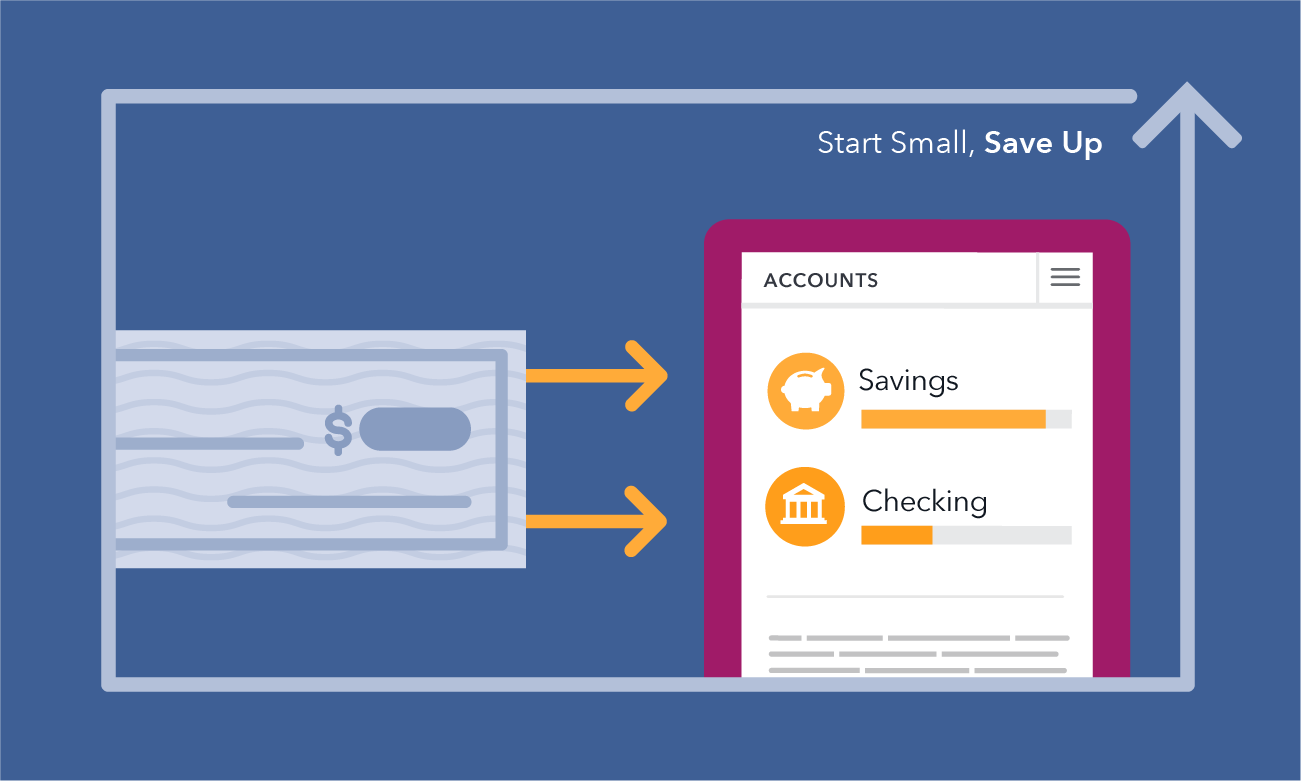Looking for an easy way to save money? Make it automatic
- English
- Español

Building towards your savings goals can take time and dedication, but regularly putting money into savings—even small amounts—is the best way to see your money grow. One of the easiest and most consistent ways to do this is to make your savings automatic.
Simply put, you choose how often you want a set amount of money to be transferred into a savings account, and once it’s set up, you’ll be putting money into savings without thinking twice. While saving automatically works best when part of a larger savings plan, it can be a great first step. Here are a few ways to get started now.
How to save automatically through your bank or credit union
An account at a bank or credit union is generally considered one of the safest places to keep your money. A savings account provides the opportunity to put money away so it can grow over time with interest.
If you already have checking and savings accounts, your financial institution may offer programs that allow you to move money from checking to savings. Below are a few of the most common programs to automate this process.
Reoccurring account transfers
Many banks and credit unions allow their customers the opportunity to set up reoccurring transfers where you choose the amount and the date—often weekly or monthly—when you want to automatically move money from your checking account to your savings account.
For example, if you’re paid on the first of every month, you can choose a date at the beginning of the month where a portion of those funds will be transferred to savings. This automated system allows you to pay yourself first before you commit those funds to other expenses.
What to consider when setting up reoccurring transfers:
- Be aware of your monthly income and expenses. If you don’t have enough money in your checking account to cover a transaction, you may incur overdraft fees. Monitor your online account to keep track of what’s coming and going. You can also set up electronic notifications of your account balance and your scheduled payments.
- If you need to start small, check to see if your financial institution has a minimum amount for automatic transfers. You can always start with the minimum and adjust it over time.
- Consider the timing of your transfers. If you find yourself coming up short at the end of the month, use our bill calendar worksheet to help track what you owe and when it’s due.
- Always check first with your financial institution. Make sure you understand any terms, conditions, or fees that may apply to reoccurring transfers.
Saving your change
Some financial institutions and companies have programs designed to help you save by rounding up the change from everyday purchases. For example, if your grocery bill is $87.45, your institution would automatically move an additional $0.55 directly into your savings account.
If you commonly use a debit card for purchases, this strategy may allow you to add to your savings without noticing a significant impact on your checking account. Since these contributions tend to be small, consider routinely checking your progress and adjusting your other savings efforts accordingly.
How to save automatically through your employer
Many people have their employers electronically deposit their paychecks directly into their checking account. Direct deposits tend to be one of the safest and fastest ways to receive your paycheck each pay period. Rather than having your full paycheck delivered to just your checking, you may be able to arrange for a portion to be automatically deposited into your savings account. This option helps ensure money is put aside for savings goals, especially if you’re prone to spending down most of your paycheck before your next payday.
For this to work, your employer must both offer direct deposit as well as an option to have your paycheck split into multiple accounts. You can then decide how much of your paycheck you want to commit to saving.
Regardless of whether it’s through your bank or credit union, employer, or other savings applications, setting up an automatic saving program can be one of the easiest and most effective ways to get started with a new savings habit. Consistently putting money aside—even in small amounts—will add up over time.
Ready to save?
Interested in learning about more ways to save? Sign up for the CFPB Savings Boot Camp, a six-step email course with valuable tips and tools to help you on your savings journey.
Stay informed
Sign up for the latest financial tips and information right to your inbox.
